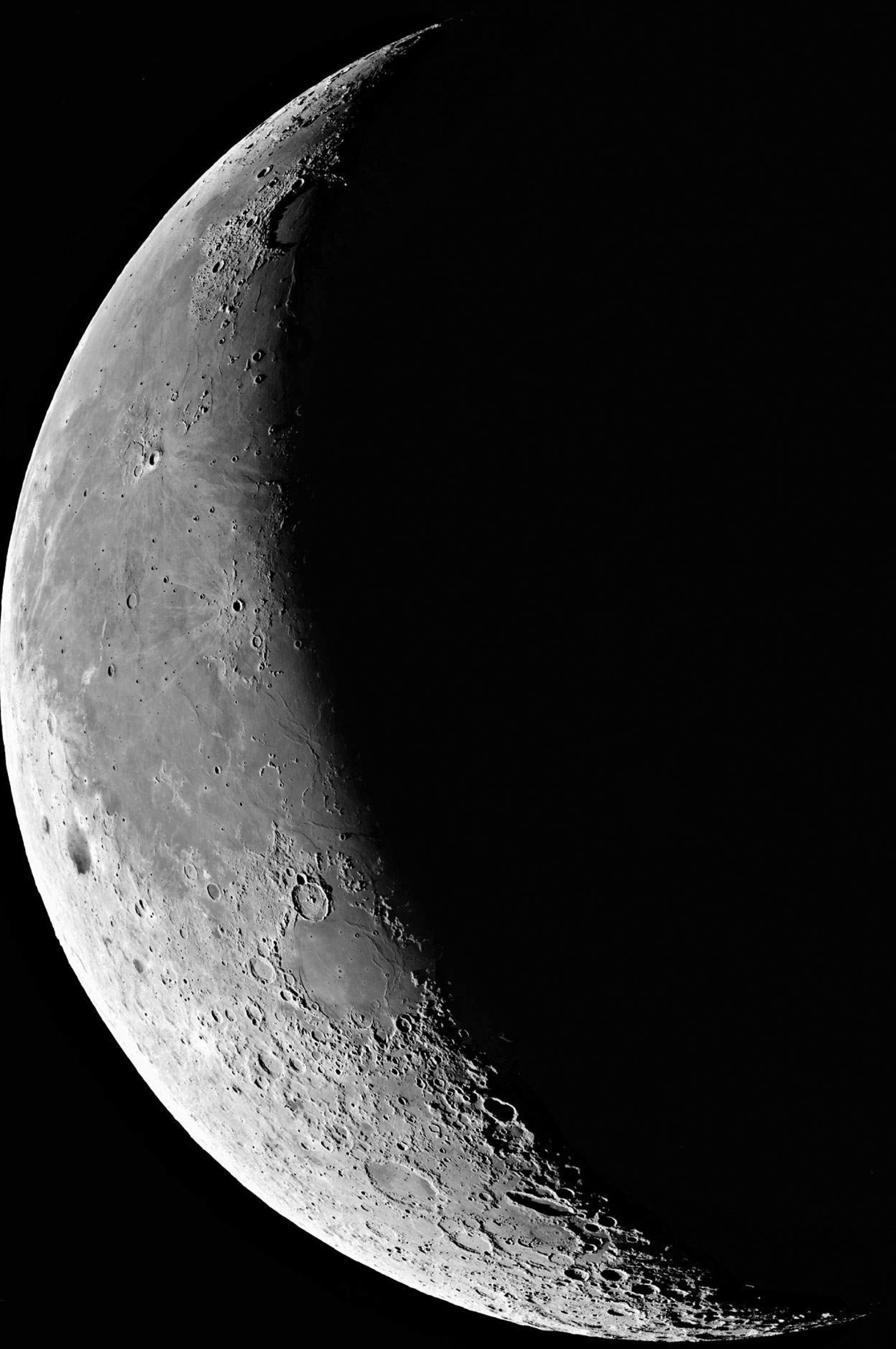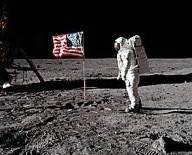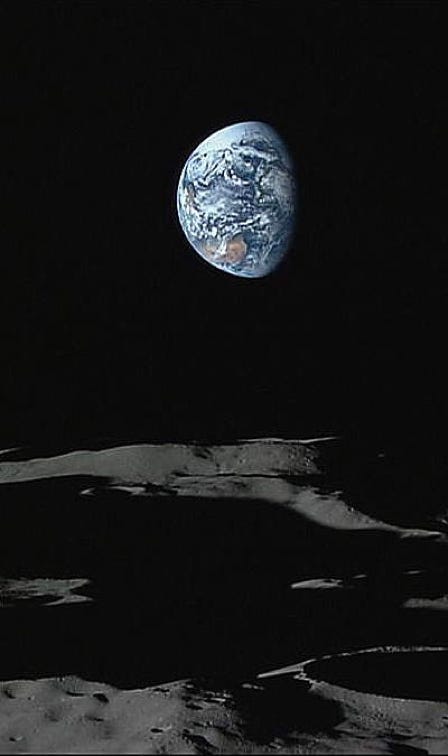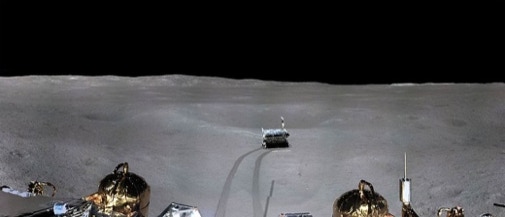

Exploring the Moon
A history of lunar discovery from the first
space probes to recent times
The international Moon fleet
Japan led off a new international wave of exploration in 2007 with its second Moon probe, Kaguya, also known as Selene. Kaguya carried a twin-camera system that sent some astonishingly detailed three-dimensional views of the surface, including the Apollo landing sites. Superb flyover movies of the surface were made by the high-definition TV system, while other instruments studied the surface composition and topography. Two subsatellites, Okina and Ouna, were released to measure the gravitational field of the Moon.
Another nation embarking on lunar exploration is India. The Indian Space Research Organization’s first Moon probe, Chandrayaan-1, meaning ‘Moon craft’ in Sanskrit, was launched in 2008. Several of its instruments were devoted to studies of the Moon’s crustal composition, including the Moon Mineralogy Mapper supplied by NASA which found signs of water at the Moon’s poles, making these areas of particular interest for future exploration.
But it is China that has been undertaking the most ambitious exploration of all with a series named Chang’e, after a Chinese Moon goddess. The first, Chang’e-1, was launched in October 2007 and made a detailed 3D photographic map of the entire Moon. A second orbiter, Chang’e 2, followed three years later with improved instruments. In December 2013 Chang’e 3 landed in the northern Mare Imbrium carrying a small rover called Yutu (‘Jade Rabbit’).
An even more remarkable advance came in 2019 January when Chang’e 4 made the first-ever landing on the far side of the Moon with another rover, Yutu 2. At the end of 2020 Chang’e 5 brought back 1.7 kg of lunar samples from a volcanic area on the Oceanus Procellarum, the first new lunar samples since Russia’s Luna 24 in 1976. In 2024 June Chang’e 6 brought back the first samples from the far side of the Moon. All these missions are providing much new information about previously unexplored regions of the Moon and, in the case of China, may well lead to future manned missions.

Earth over the Moon’s south pole from the Japanese probe Kaguya

The international Moon fleet
Surface panorama of the lunar far side from Chang’e 4. Tracks in the soil
lead from Chang’e to the small rover Yutu-2, at centre
Probe
Launch date
Results and notes
(also known as SELENE)
2007 September 14
Japanese lunar orbiter. Compiled photographic atlas from polar orbit. Measured surface composition and crustal thickness
2007 October 24
Chinese lunar orbiter. Stereo imaging and surface studies
2008 October 22
Indian Space Research Organization lunar orbiter. Found signs of ice at the Moon’s poles
2009 June 18
NASA spacecraft in low polar orbit. High-resolution mapping of surface features and topography
2010 October 1
Chinese lunar orbiter. Surveyed landing sites for Chang’e 3 unmanned rover. Subsequently flew past the asteroid Toutatis
2011 September 10
Twin NASA orbiters. Mapped the Moon’s gravitational field in detail
2013 December 1
Landed in Mare Imbrium on 2013 December 14 with rover Yutu
2018 December 7
Landed on the far side of the Moon on 2019 January 3 inside the crater Von Kármán with rover Yutu 2
2019 July 22
Crashed on the lunar surface on 2019 September 6 during attempted landing with rover
2020 November 23
Landed in the Oceanus Procellarum on 2020 December 1. Brought back 1.7 kg of samples
2024 May 3
Landed on the far side of the Moon in the South Pole Aitken Basin on 2024 June 1. Brought back 1.9 kg of samples
For a list of recent and forthcoming lunar missions see here.